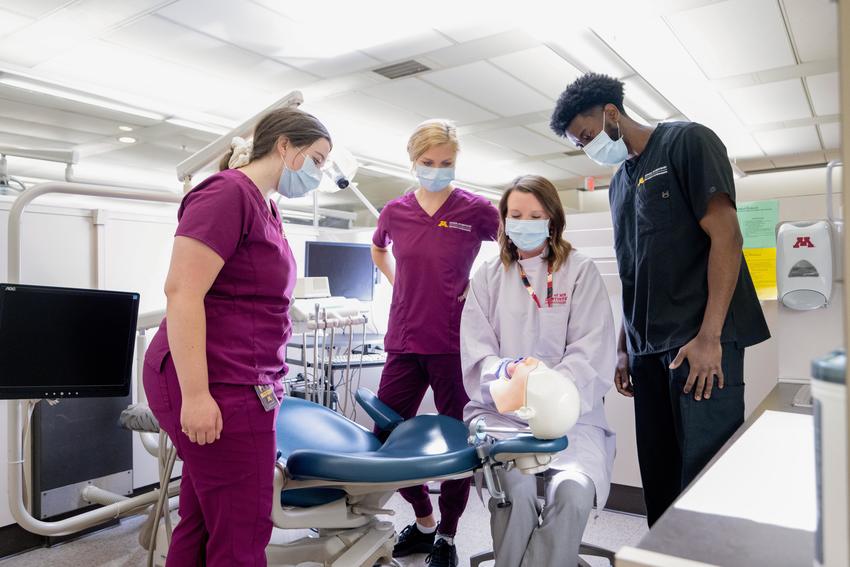TEATL-funded research finds a way to make learning less scary

Dental school comes with a lot of scary “firsts.” The first patient. The first day in lab. The first time giving someone an injection.
Faculty cannot alleviate all the stress that comes with these firsts—but Rachel Uppgaard, DDS, clinical associate professor of oral and maxillofacial surgery, knew she could do something to build confidence for her learners.
Uppgaard noticed the anxiety students had when it came to providing local anesthesia injections for the first time—necessary to provide comfort to patients experiencing minor procedures. “Students would come to clinic so nervous,” she recalled, of what learners called “stab lab:” the day when they would practice local anesthesia on one another. “I would get emails ahead of time, with students panicking.”
Determined to make this process more effective for learners, Uppgaard applied for a Technology Enhanced Award for Teaching and Learning (TEATL) award in 2019. The goal: purchase a set of manikins for learners to practice on, and encourage them to use tools easily available to them—smartphones—to review their technique.
In addition to alleviating some stress by allowing for practice on manikins rather than fellow students, Uppgaard hoped to learn whether having a peer record the practice injection, with the ability to review that video, would impact the student’s confidence in their skills.
Uppgaard and her team of researchers divided DDS students into two groups. The control group simply practiced their injections on manikins, while the experimental group practiced and recorded videos on their smartphones. Each group took a survey assessing their confidence before the hands-on training, immediately after the training and a month after the training.
Uppgaard published the results of the study in the Journal of Dental Education, in an article titled “The effect of smartphone filming on student confidence in dental anesthesia techniques: a randomized trial.” She found that, as expected, the group that could review their technique in a recorded video felt more confident in their ability to provide local anesthesia than those who practiced on the manikins alone.
“This study suggests that the incorporation of smartphone-recorded video review in simulation training is beneficial for the confidence levels of dental students learning [local anesthesia] techniques,” Uppgaard wrote in the paper. “Because smartphone filming allowed the experimental group to instantly review the content, there was an opportunity for timely self-feedback.”
Uppgaard is pleased with the results of the survey, and looks forward to implementing this new course of study, as well as other ways of making learning better for students.
“We should be constantly trying to improve our education for our students,” she said. “I allow them to take videos of working on manikins in class, and have been furthering my teaching and research with a virtual reality component.”
